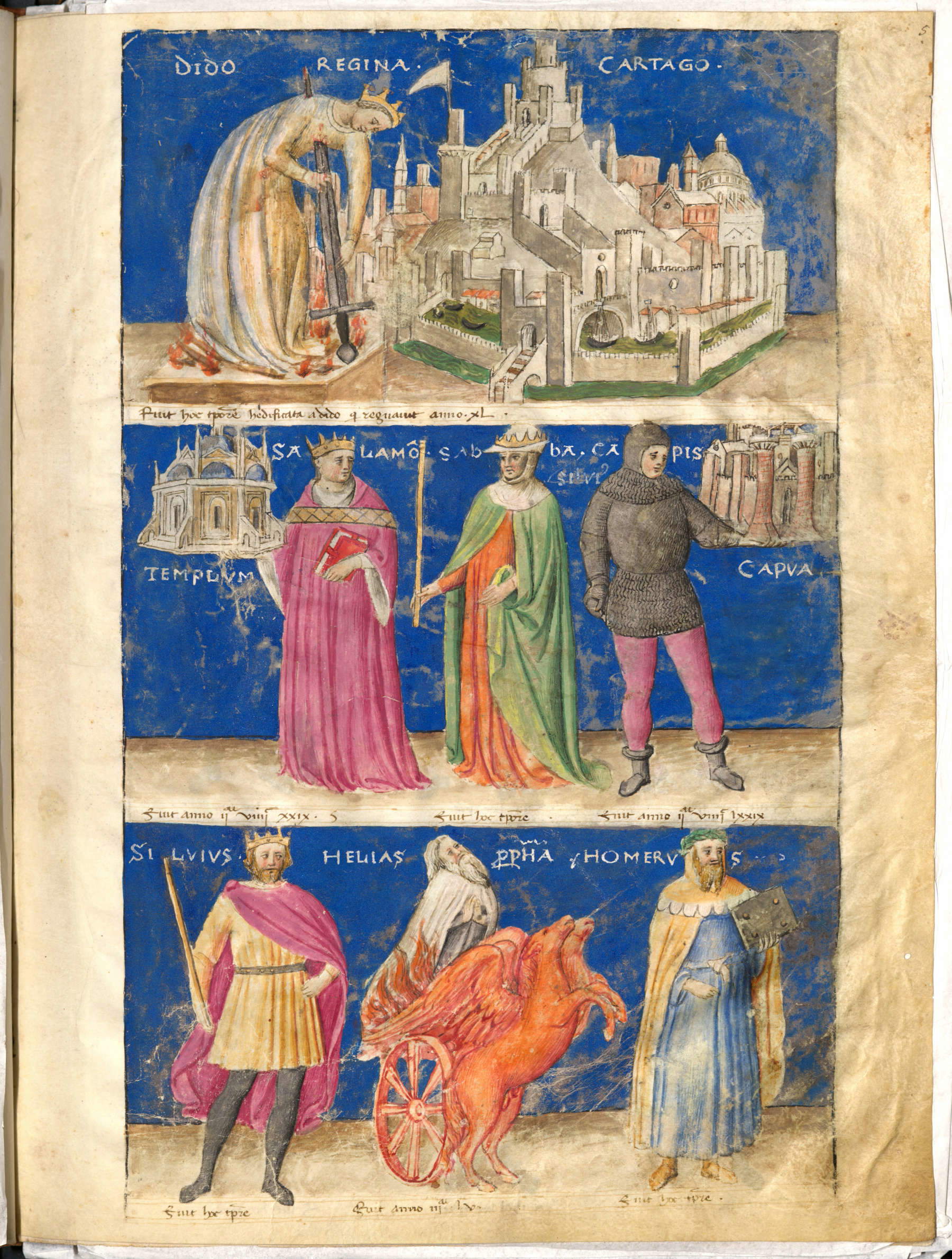The Braidense National Library in Milan announced today an acquisition of extraordinary importance. The Ministry of Culture has in fact purchased for the sum of 1 million euros a medieval codex that will join the Library’s already prestigious Morbio Collection. It is the Cronaca Crespi, one of the most fascinating and significant works of the 15th century, illustrated by the Renaissance painter Leonardo da Besozzo. A work that, thanks to this acquisition, becomes part of one of the richest collections of historical manuscripts and artistic value in Italy.
The codex, dating from the early decades of the 15th century and dated between 1433 and 1436, tells the story of humanity through a cycle of 38 miniatures depicting emblematic figures from Greek and Roman mythology, biblical history and Christian genealogy. The beauty and historical importance of the work lies not only in its content but also in its execution. The cycle of miniatures illustrated by Leonardo da Besozzo is thought to represent a faithful copy of the lost frescoes painted by Masolino da Panicale for the Orsini Palace in Rome, in the Sala Theatri, between 1433 and 1436.
The manuscript, which has maintained an almost perfect state of preservation, is a unique example of Renaissance art. Each page is divided into three horizontal registers that narrate in succession the different historical and mythological phases through figures related to the classical and biblical tradition.

The journey of the Crespi Chronicle is as fascinating as its contents. In 1862, the codex was acquired by the collector and historian Carlo Morbio (1811-1881), and later, upon his death, it passed to his daughter Giulia Morbio (1857-1944), who preserved it along with other manuscripts and books belonging to her family. The Morbio family’s private collection, including the precious codex, was sold at auction, and the Braidense Library, already in possession of numerous volumes and manuscripts related to the history of Lombardy, was able to acquire several specimens, including 156 manuscripts.
With the acquisition of the Cronaca Crespi, the work symbolically returns to the Morbio collection. This manuscript adds to the Braidense’s already rich holdings, consolidating this institution’s role as the custodian of a priceless cultural heritage.
The manuscript is structured in six sections that divide the history of humanity according to the six ages of man: Creation,with the figure of Adam; the period from the Flood, with the figure of Noah; the descendants of Abraham; the story of David to the Babylonian Captivity; the period from the Captivity to the birth of Christ; and the era from the birth of Christ to the events of 1395, with the figure of Tamerlane.
Each side of the manuscript is a testimony to how medieval art was able to tell the story, interweaving mythology with religion and ancient history, creating a complete picture of man’s genealogy.

A key aspect of this acquisition concerns the digitization of the manuscript, which has made it possible to preserve it in digital format and make it accessible to the public. The Braidense, in fact, has completed the digitization of the entire codex, allowing scholars, but also enthusiasts and the general public, to explore it easily through the web.
Digitization represents a fundamental resource for the enjoyment of works that, due to their rarity and fragility, could hardly be exposed to the public in their original version. This process has made it possible to make the manuscript visible online, so that everyone can appreciate the beauty and refinement of the miniatures created by Leonardo da Besozzo.

The acquisition of the Cronaca Crespi represents a significant moment for the Braidense National Library and for Italian culture, which enriches its heritage with a work of great historical and artistic value. The possibility of consulting the entire digitized codex marks an important step in the preservation and dissemination of culture, making accessible to all a work that would otherwise have remained confined to the archives of an elite library.
“An extraordinary acquisition,” stresses the Director General of the Pinacoteca di Brera and the Biblioteca Nazionale Braidense, Angelo Crespi, “which shows how much the Italian State and specifically the Ministry of Culture is still committed to increasing the public heritage and so that important parts of our history are not lost. This is because cultural heritage is first and foremost a reservoir of meaning and identity for a nation like ours that recognizes itself in cultural assets. The great investment made, also from an economic point of view, is also a sign of how much libraries are considered - paraphrasing Marguerite Yourcenar - really granaries of the spirit, granaries of our civilization.”
To mark the presentation, a study afternoon will be held in the Braidense Library’s Reading Room from 3 p.m. Nov. 12. Introduced by director Angelo Crespi, the in-depth discussion will feature Cristina Quattrini, Art Historian of the Pinacoteca di Brera, Lombard and Piedmontese Painting Collections of the Renaissance, with a talk entitled: The Chronicle of Leonardo da Besozzo from the Crespi Collection to the Braidense Library; Pier Luigi Mulas, Associate Professor of History of Modern Art, University of Pavia Department of Humanistic Studies, with a talk entitled: Leonardo da Besozzo painter and miniaturist. To conclude Claudia Daniotti, Senior Tutor, Middlebury-CMRS Oxford Humanities Program and Research Associate, Keble College, Oxford, with a talk entitled: Historia per figuras. The Codex Crespi and a lost fresco cycle in Rome.
 |
| Braidense National Library acquires Cronaca Crespi, valuable 15th century illustrated codex |
Warning: the translation into English of the original Italian article was created using automatic tools. We undertake to review all articles, but we do not guarantee the total absence of inaccuracies in the translation due to the program. You can find the original by clicking on the ITA button. If you find any mistake,please contact us.